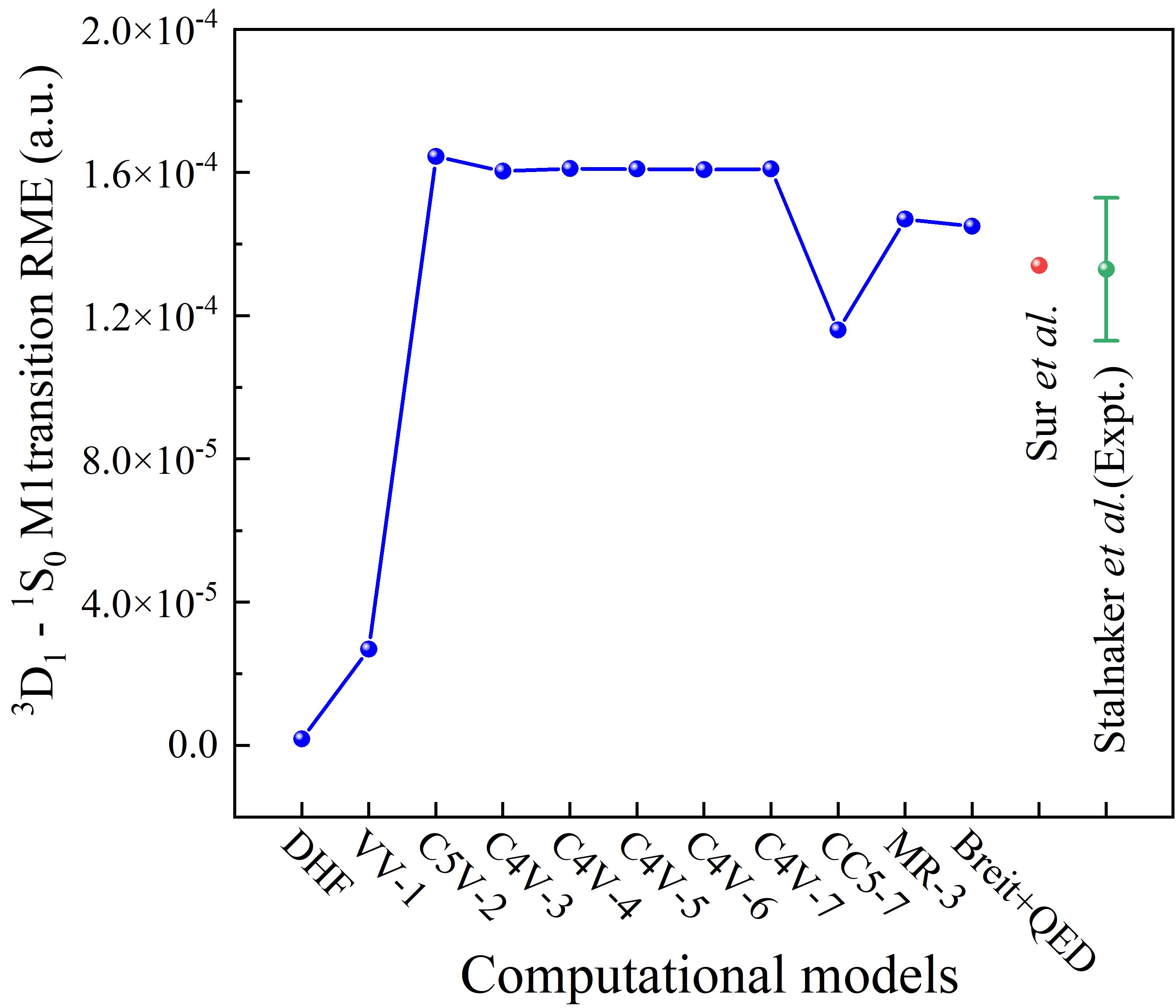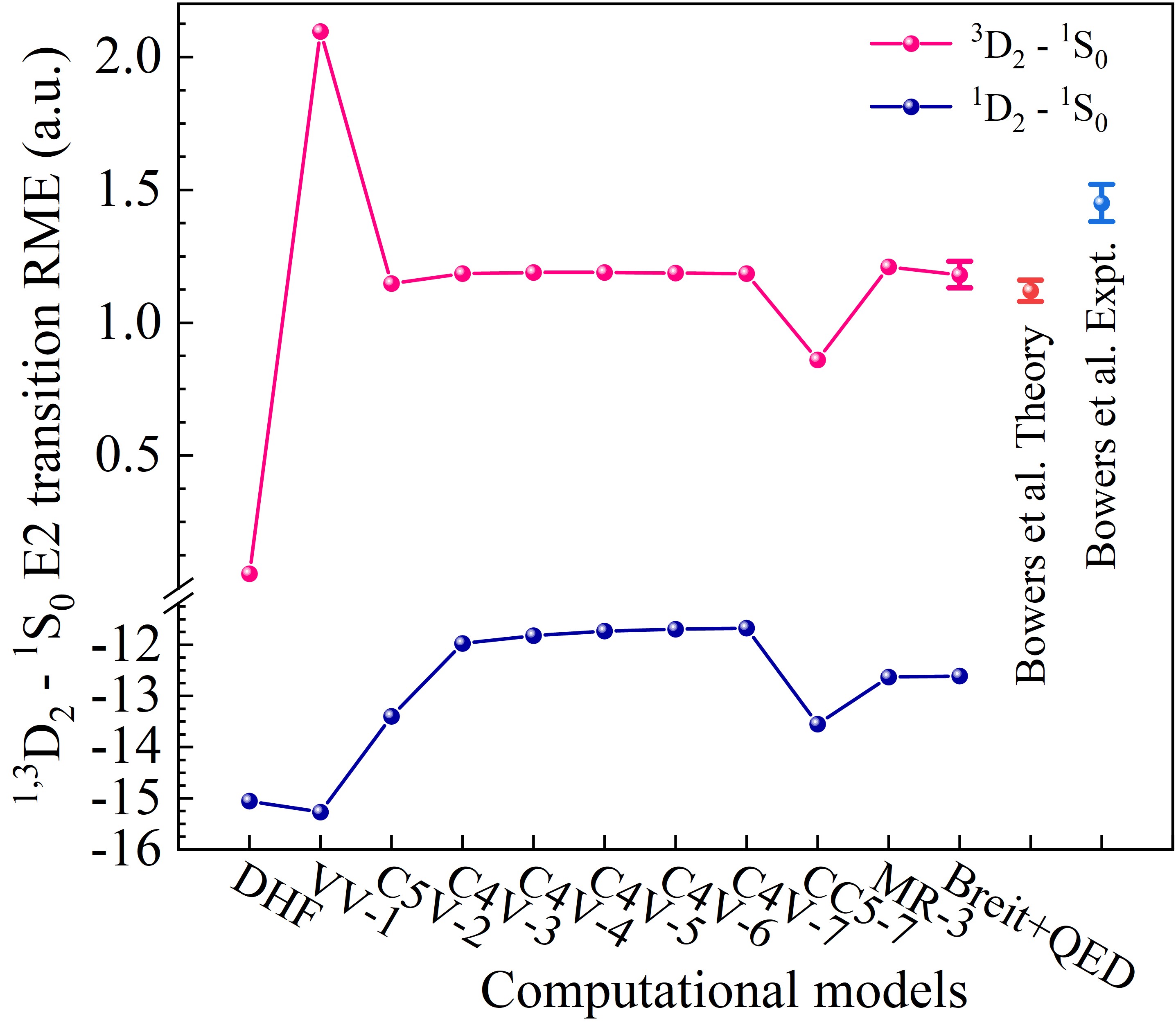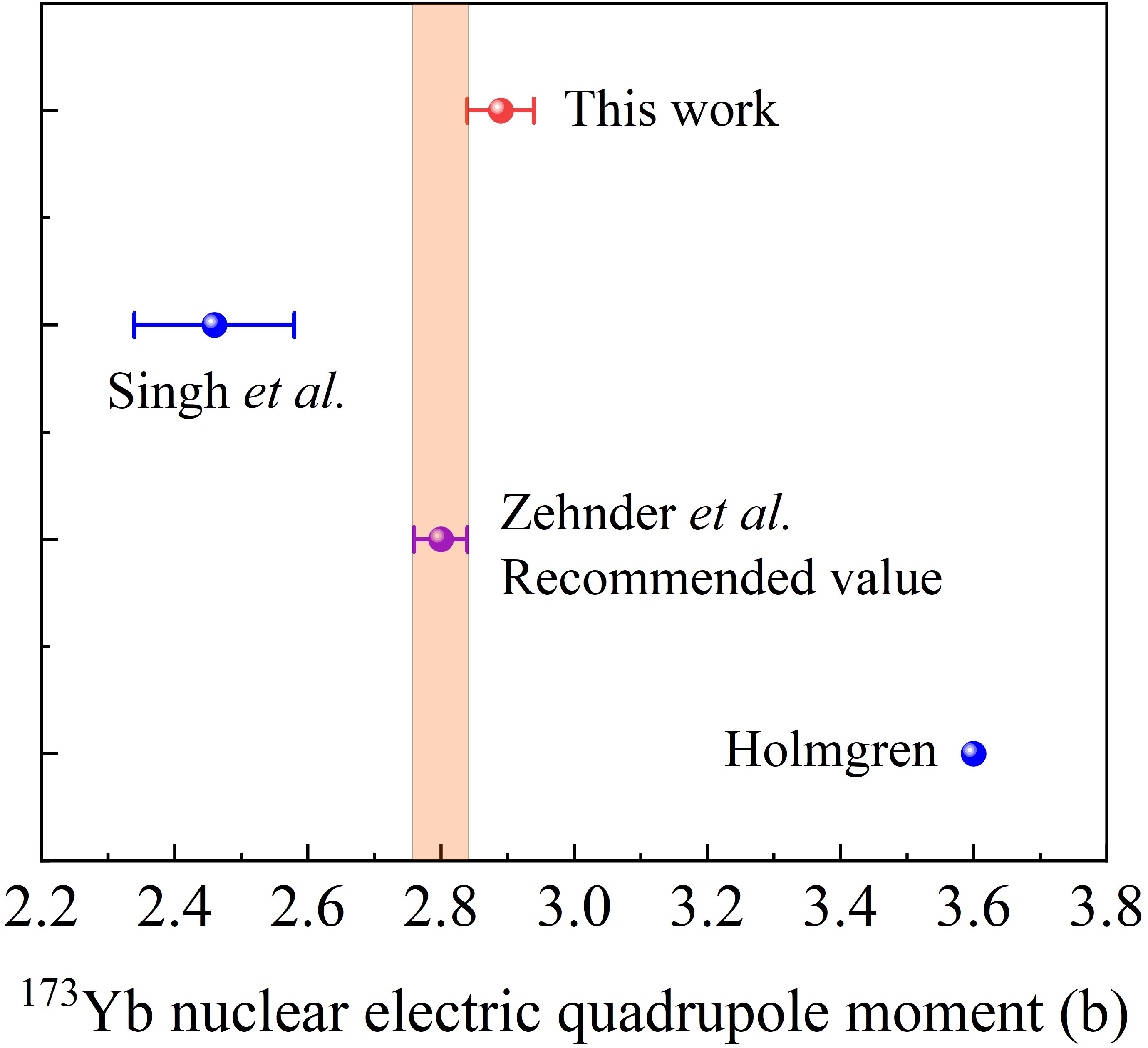Recently, utilizing multi-configurational Dirac-Hartree-Fock theory, the Sr optical lattice clock research team from the National Time Service Center of the Chinese Academy of Sciences accurately calculated the transition probabilities for the M1 transition between the 5d6s 3D1 state and the ground state 6s² 1S0, as well as the hyperfine-induced E2 transitions.
The result published in Acta Physica Sinica, titled "Accurate Calculation of Hyperfine-Induced 5d6s 3D1,3-6s2 1S0 E2 Transitions and Hyperfine Constants in Ytterbium Atoms" .
Researchers noted that the M1 and hyperfine-induced E2 transition significantly influence the detection of parity-violation signals. Therefore, precise calculations of these transition probabilities are crucial.
Previous studies only considered the impact of the 5d6s 3D2 perturbed state on the E2 transition probability, which resulted in discrepancies of 3% to 26% between calculated hyperfine constants and experimental values.
According to the author, researchers conducted a detailed analysis of electronic correlation effects on M1 and E2 transition probabilities (as shown in Figure 1), examining how various perturbed states and hyperfine interactions influence these probabilities.
The hyperfine constants for the 5d6s 3D1, 2, 3 and 1D2 states calculated by the team align well with experimental measurements, validating the computational model. Additionally, by combining experimentally measured hyperfine constants with theoretical calculations of the electric field gradient, the team re-evaluated the nuclear electric quadrupole moment Q=2.89(5) b for the 173Yb nucleus. This result is consistent with currently recommended values [Stone, N. (2016). Table of nuclear electric quadrupole moments. Atomic Data and Nuclear Data Tables, 111, 1-28.] (as shown in Figure 2) .
This research not only advances the precise calculations in alkaline earth metal atoms, but also contributes to a deeper understanding of atomic structure, with important implications for the development of future precision measurement techniques based on atomic transitions.
Authors Zhao Guodong and Cao Jin share first authorship, while Lu Benquan and Chang Hong are corresponding authors.


Figure 1. Reduced matrix elements for the M1 transition (left) and E2 transitions (right) between the 5d6s 3D1 and 6s² 1S0 states under different computational models.(Image by NTSC)

Figure 2. Comparison of the nuclear electric quadrupole moments of 173Yb across different research.(Image by NTSC)
 Print
Print